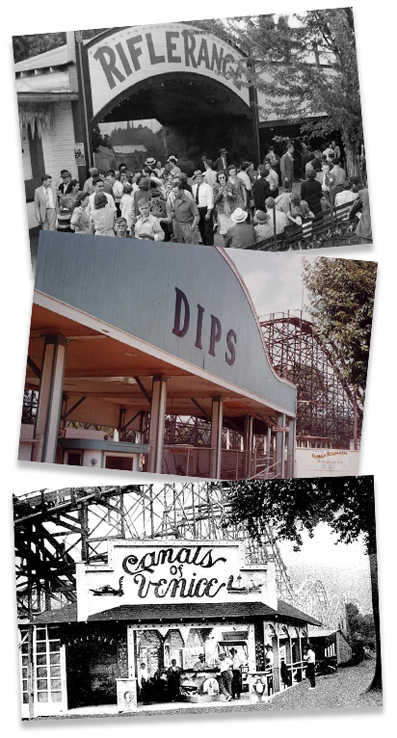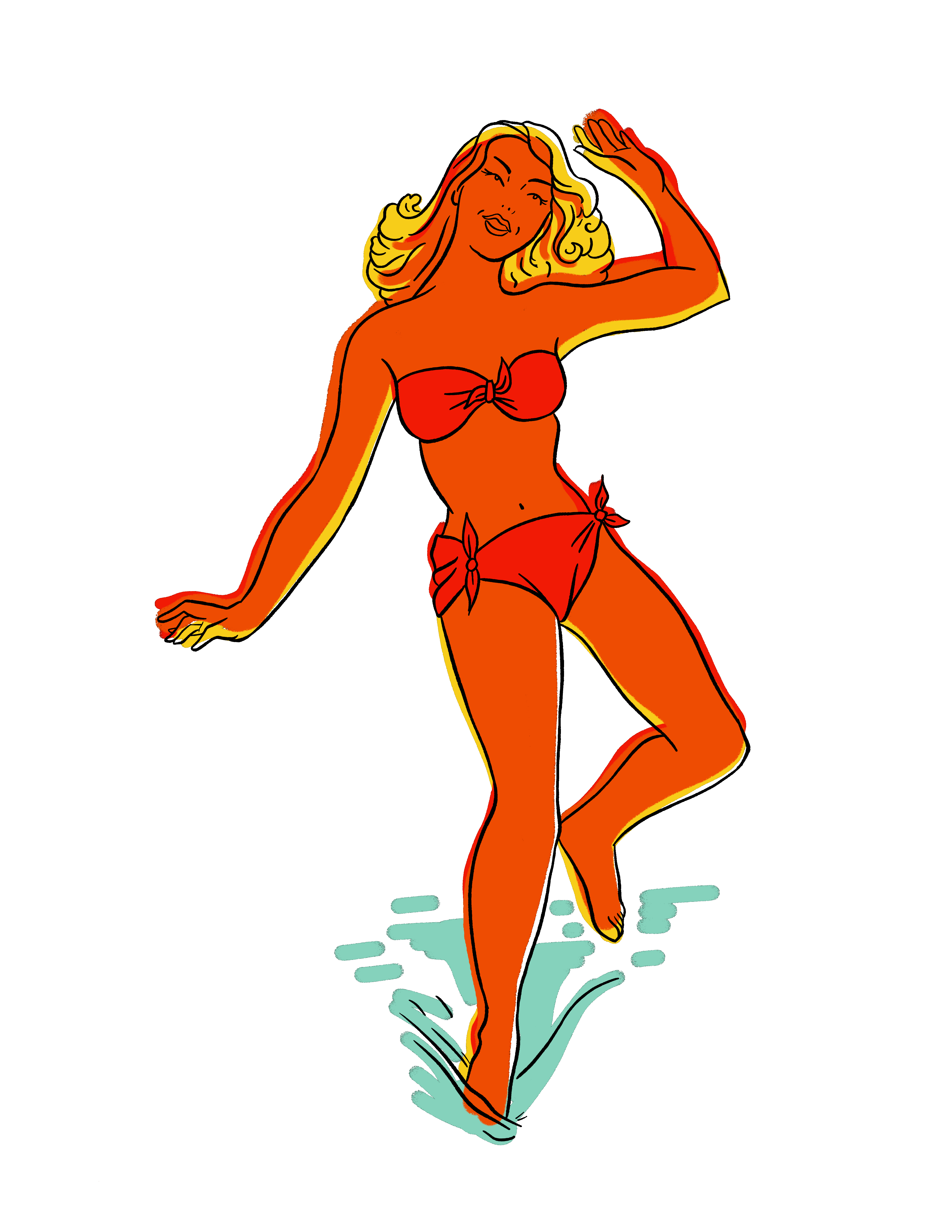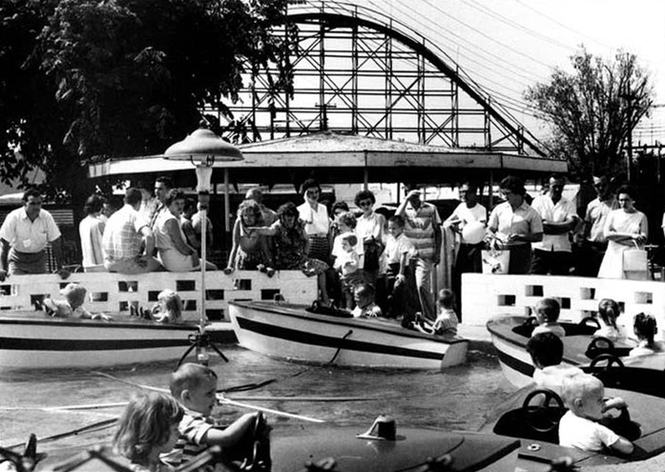 | |||||||||
| Home | A Brief History |
Amusement Park |
Bars & Dance Halls |
Photo Gallery |
Historical Events |
BLYC | Local Restaurant Guide |
Store | Contact Us |


The Amusement Park
In the early 1900’s Buckeye Lake featured two dance pavilions, including the Palis de Danse, a swimming beach, bathhouse, arcade, picnic area and ballpark. Drinking establishments, restaurants, hotels and rental cottages appeared all along the lakeshore to accommodate visitors from out of town. Amusement rides such as a Merry-Go-Round, a Ferris wheel, a roller coaster, a “bug” ride (an airplane ride), a fun house and a house of mirrors, a mini train ride provided thrills for all. There were shooting galleries, a ring toss, pennies to pitch and other games. There was a Tunnel of Love ride known as the Canals of Venice that was in the Crane Lake also known as the Little Lake.
Boat rides were also popular. There were row boats for an on-the-lake picnic or fishing, and speed boat rides were available, or you could get aboard the large excursion boats named the City of Lancaster, City of Newark and the City of Columbus.
The smaller Del Fisher Marina boats were the Pastime, the Ada and the Ethel. They stopped at all the major docks around the Lake as they met arriving trains.
Rapid growth took place at Buckeye lake in the 1920’s as a successful amusement park developer, John J. Carlin, leased the park from the Ohio Electric Railway Company in 1924 and eventually purchased the park in 1929 from the Ohio Power Company, who had originally purchased the park.
The Great Depression in 1929 had a profound effect on the Buckeye Lake region. Many families who enjoyed the modest lake cottages lost their homes in the city, and their summer resort homes became a permanent residence. The interurban rail line went out of business, making cheap transportation unavailable to the amusement park which had been a regular haven for urban populations.

The Park was on the decline.
New management arrived in the 1930s and rose to the challenge of keeping the Buckeye Lake Amusement Park alive. The roller coaster built in 1930, “The Dips" quickly became a favorite attraction and top moneymaker. The Skateland roller rink began to hold races in addition to offering open skating. With the repeal of prohibition in 1933, the merry-go-round building was transformed into a nightclub called the Pink Elephant.
In 1938, the artist Ben Shahn, a leading American social realist of the 1930’s (who may best be remembered for his 1932 paintings of the Sacco–Vanzetti trial), was hired as a photographer by the Resettlement Administration to document the living and working conditions in America.
He made these observations.
“I went out to a place called Buckeye Lake…Buckeye Lake is the weekend and summer months for all of central Ohio. Its patrons are clerks, Columbus politicians, laborers, businessmen, droves of high school and college students. The rich occupy one side of the lake, the rest rent cottages on the other side. It has an evil reputation and an evil smell. It has furnished Columbus and the neighboring small towns and cities with dancing, cottaging and swimming for several generations”. This is the most unsavory place the photographer ran across in Ohio”. See Ben Shahn's Photos of Buckeye Lake.